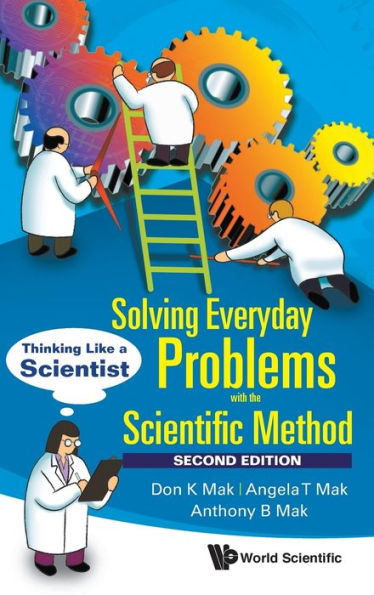Table of Contents
Preface to the Second Edition vii
Preface to the First Edition xi
1 Prelude 1
2 The Scientific Method 3
2.1 Edwin Smith papyrus 3
2.2 Greek philosophy (4th century BC) 4
2.3 Islamic philosophy (8th century AD - 15th century AD) 7
2.4 European Science (12th century AD - 16th century AD 8
2.5 Scientific Revolution (1543 AD - 18th century AD) 10
2.6 Humanism and Empiricism 14
2.7 The Scientific Method 16
2.8 Application of the Scientific Method to Everyday Problem 17
3 Observation 19
3.1 External information 25
3.1.1 Missed information 25
3.1.2 Misinformation 26
3.1.3 Hidden information 32
3.1.4 No information 40
3.1.5 Unaware information 44
3.1.6 Evidence-based information 47
3.2 Internal information 48
(A) Emotional 48
3.2.1 Self-denied information 48
3.2.2 Biased information 49
(B) Unemotional 50
3.2.3 Unexploited information 50
3.2.4 Peripheral information 52
4 Hypothesis 57
4.1 Abduction 75
4.2 Explain the past and present; predict the future 87
4.3 Albert Einstein 92
5 Experiment 96
5.1 Experiment versus hypothesis 118
5.2 Platonic, Aristotelian, Baconian and Galilean methodology 119
6 Recognition 122
6.1 John Nash 140
7 Problem Situation and Problem definition 145
7.1 Perspectives on different levels 145
7.2 Perspectives on the same level 146
8 Induction and Deduction 153
8.1 Induction 153
8.2 Deduction 156
8.2.1 Reductio ad absurdum 163
9 Alternative Solutions 165
9.1 Brainstorming 189
9.2 Operations research and management science 190
9.3 Lotion bottle with a pump dispenser 192
10 Relation 194
10.1 Creativity 206
10.1.1 Ordinary thinking 206
10.1.2 Creative thinking 207
10.1.2.1 Knowledge 208
10.1.2.2 Insight 209
10.1.2.3 Unconscious mind 210
10.1.3 Double Helix 211
10.1.3.1 Genetic material 211
10.1.3.2 Watson and Crick at Cavendish Laboratory, Cambridge 212
10.1.3.3 Rosalind Franklin at King's College, London 215
10.1.3.4 The triple helix model 217
10.1.3.5 The double helix model 218
10.1.4 Creative thinking and ordinary thinking 222
10.2 Scientific Research and Scientific Method 223
10.3 Can we be more creative? 224
11 Mathematics 226
11.1 Fermi problems 302
12 Probable value 307
13 Epilogue 319
Bibliography 323
Index 330



